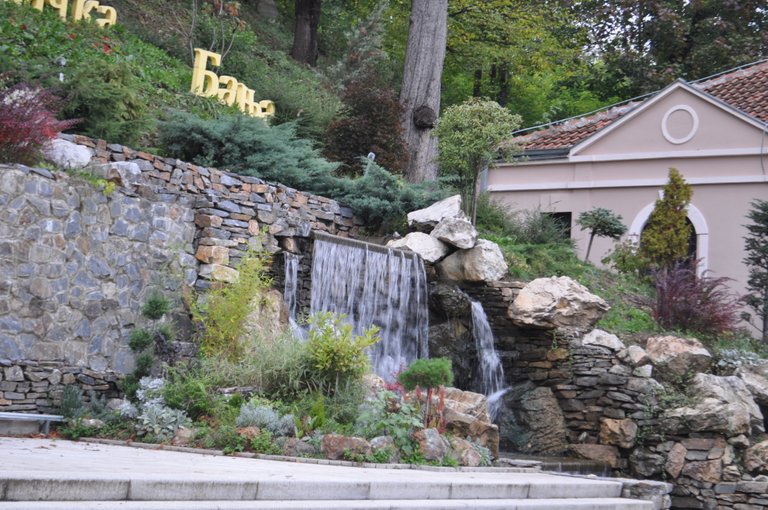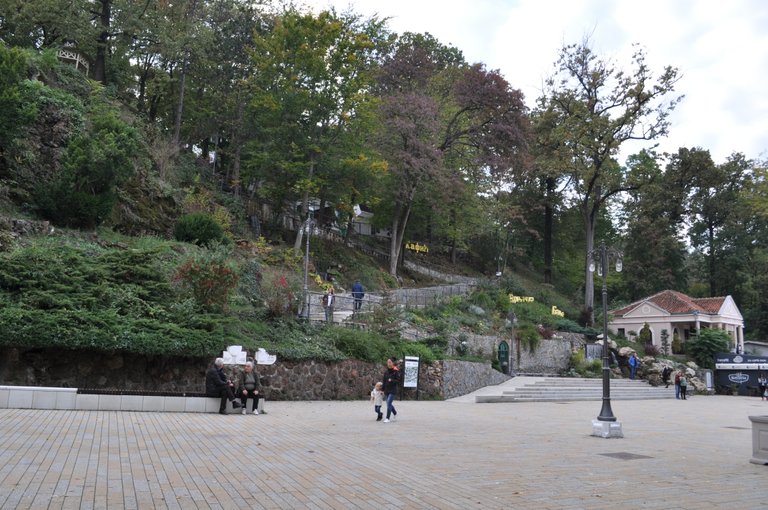History of Vrnjacka Banja
The queen of spa tourism, as Vrnjačka Banja is informally called, has long been known for its healing springs. This area has been inhabited since prehistoric times. Archaeological finds, tools from the Late Stone Age, reveal the possibility that prehistoric people also used spa springs. The healing properties of the water in Vrnjačka Banja can be heard for the first time in Roman times. They built the Aquae Orcinae health resort and the Fons Romanus hot water source on this site. It is believed that the natives, the Celtic tribe Scordisci, used water from a spring for drinking, bathing and healing. The fact that the spa water was famous in ancient times is mostly shown by the numerous gold coins that have been found. The Romans threw coins at the time into wells. In addition to gold coins from the 2nd to the 4th century, the remains of a swimming pool were also found in the spa. It is believed that the southern Slavs also knew about the healing properties of mineral waters when they inhabited the Balkan Peninsula. However, little is known about the history of Vrnjacka Banja at that time. Legends mention that Turkish beys and spahis were able to come to the spa on vacation, while the local population was forced to serve them. The natives then, according to the legends, buried the springs from the revolt. In the thirties of the 19th century, in Serbia, liberated from Turkish rule, Prince Miloš Obrenović hired geologist Herder to examine mineral waters. In 1835, the Saxon baron performed the first analysis of Vranje's hot mineral water and assessed it as very high quality, comparing it with Karlovy Vary in the Czech Republic. However, the spa waited for another thirty years for modern development.
The spa core was built by prominent people from Kruševac, Kraljevo and Trstenik. They united and founded the Founding Society of Sour Hot Water in Vrnjci in 1868. They bought the land on which the springs of medicinal water were located, which had been in the hands of the village bosses until then, and built the first facilities.
The name Vrnjačka Banja was given only after the village in whose area it was located. Only a year after the investment of the Sour Hot Water Company, the spa core became very popular. Then, the problem of accommodating guests arose, because the houses of the local population did not have the capacity to accommodate all those who wanted to come.
Next to the river, there were so-called krajnjače, huts that were intended for rent. The first catering facility was the inn from 1885 of Kosta Petrović Rakica.
According to the curator of the museum in Vrnjačka Banja, Jelena Borović, the most important year for Vrnjačka Banja was 1888. Then General Jovan Belimarković, a very prominent person of that time (Minister of War, Interior, Construction and Deputy during the reign of the minor Aleksandar Obrenović) decided to build a summer house.
The following year, the villa in Vrnjci was visited by the king, and from then until the Balkan wars, this location was very popular with the Serbian aristocracy. Everyone who meant something in the Serbian society at the time, the officer, financial, political and cultural elite gathered in the spa, and Belimarković's summer house was also a place where some important, historical decisions were made in Serbia.
The Balkan wars and the First World War did not succeed in erasing the beauties of the spa in Vrnjci, so as soon as the war days ended, the spa flourished. Between the two wars, the elite and aristocracy of the society again chose Vrnjačka Banja as the center of their gatherings. The richest people in Serbia built villas and summer houses here, and some of them are still preserved today.
After the Second World War and with the arrival of communism, most of the villas were nationalized, and the spa changed its clientele. There is no more splendor and luxury of the elite, but patients are sent to the spa for treatment. Already in the sixties, new facilities were being built, and in the eighties, the number of visitors to Vrnjačka Banja was a record, 200,000 tourists with 2 million overnight stays.
About Aleksandar 1 Karađorđević
Alexander I Karadjordjevic was the regent heir to the throne of the Kingdom of Serbia, the regent heir to the throne and king of the Kingdom of Serbs, Croats and Slovenes, as well as the king of Yugoslavia. He is also known as the Knight King Alexander I the Unifier. He was born on December 16, 1888 in Cetinje, and was killed on October 9, 1934 in Marseilles during an official visit to France.
Alexander's parents are King Peter I Karadjordjevic and Princess Ljubica - Zorka. He had two sisters and two brothers: Jelena, who was married to Prince Ivan Konstantinovic, a close relative of the Romanov royal family, Milena, who died when she was less than two years old, George, who was to succeed his father, and Andrew, who died a few months after birth. Alexander's maternal grandfather was the Montenegrin prince and king Nikola I Petrović, and his grandmother was the princess and queen Milena. He was baptized by the envoy of the Russian emperor Nikolai II Alexandrovich, who was his godfather.
When he was 15 months old, Aleksandar lost his mother. He grew up in his homeland, and in 1894 he moved with his father and brother to Geneva, where he finished elementary school. He lived there modestly and went to school with children from the bourgeoisie. In 1899, he enrolled in the School of Law in St. Petersburg. When King Peter came to the Serbian throne in 1903, Alexander returned to Belgrade and continued his education there. At the age of 15, he joined the Sixth Regiment of the Serbian Army, and he also loved literature, music and art.
In 1905, he was admitted to the Paževo Corps, where he studied military sciences. Russian Tsar Nikolai saw him as his son and wanted Alexander to marry one of his daughters. As the Russian climate did not suit him, Alexander returned to Belgrade, and was taught by a Russian teacher, Colonel Suljmenov. He went to St. Petersburg to take exams.
In 1907, he was absent from school for two months due to the annexation of Bosnia and Herzegovina, which upset him and did not allow him to study.
Dragan Nikolic
Dragoslav Dragan Nikolić is one of the most famous and most popular Serbian actors. He is considered a representative of Belgrade charm, a gentleman with the character of a gentleman, a national class, a legend of Serbian acting, one of the biggest guys in YU film, etc. He was born on August 20, 1943 in Belgrade, and died on March 11, 2016, after a long and severe illness. His wife was Milena Dravic.
The actor's parents were called Jelena and Dušan, and they are originally from Jagodina and Berane. The original surname of the family was Živković, but grandfather Radonja changed it to Nikolić because of his great-grandfather's name was Nikola. Dragan had an older brother, Miroslav, whom he considered his role model.
He spent his childhood in the settlement of Crveni krst, in Požarevačka Street. The "Božidar Adžija" House of Culture was nearby, and he spent his time in the cinema, theater and on the playground made by his father and the fathers of his friends. They called it SK "Gtom" and they played football there, scheduled fights, etc. The role model of Dragan's generation was Bata Živojinović, so they followed him and identified with him.
After primary school, he enrolled in the Fourteenth Belgrade Gymnasium, but was transferred to the School of Economics. He spent two years there and as a seventeen-year-old he passed the entrance exam at the Academy of Theater, Film, Radio and Television, where he graduated in acting. He stated that he had a great desire to succeed at the entrance exam, so when the professor asked if he could sing, he jumped on the table and started shouting with an imaginary guitar in his hands. He prepared a monologue by Tom from "Glass Menagerie" by Tennessee Williams and a recitation, but he sang the song "24,000 Kisses" by Adrian Celentan. The professors were in shock, but he was received with the statement: "So much dose of rudeness and persistence, he will probably be able to do this job, it will be something from him." In his youth he was a rally driver, speedboat lover and lover of Hell. Ciganlija and the Sava River.













This is really a beautiful place. Your photos are great!
Thank you very much, @stimburgarin :D
Congratulations, your post has been added to Pinmapple! 🎉🥳🍍
Did you know you have your own profile map?
And every post has their own map too!
Want to have your post on the map too?
I like the way you introduced the post. The photos are amazing. What do you use for photography?